The muscular Greek Sculpture are one of the masterpieces of ancient art. These statues are renowned for their excellent anatomy and carving techniques, emphasizing the muscles and proportions of the human body. One of the most famous examples is the statues of Venus and Homer in Milo. These works showcase the ancient Greek pursuit of human beauty, while also conveying strength, perseverance, and elegance. Muscle and muscular statues play an important role in art and culture, inspiring viewers to think about the beauty of the body and human potential. These statues represent the great achievements of ancient Greek culture and are still widely appreciated and studied to this day.
1. Why are Greek statues so muscular?
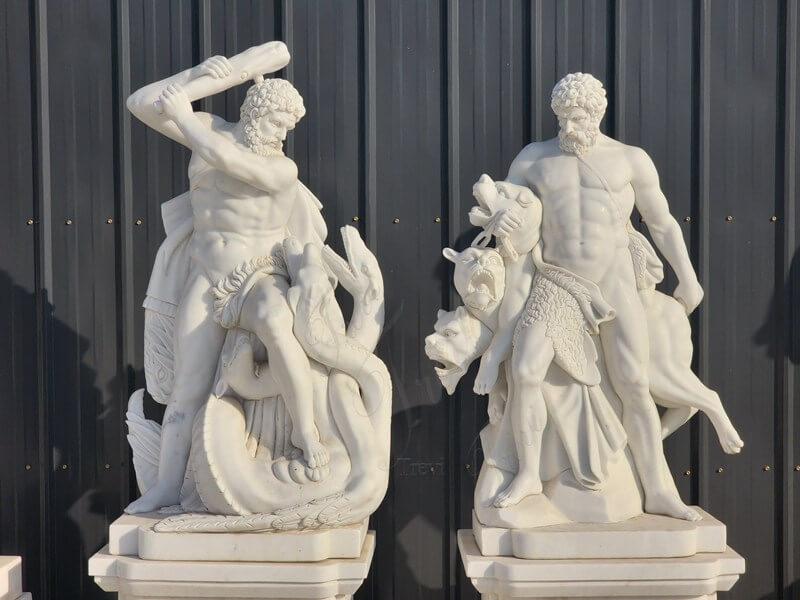
The reason why there were so many muscular greek Sculpture was because they reflected the high importance placed on physique and sports in ancient Greek culture. In ancient Greece, sports and physical exercise were considered important values and moral principles, and sculpture was a way of expressing these values. By emphasizing muscles, statues convey the virtues of physical strength, health, and exercise. In addition, these statues are also part of ancient Greek mythology and religion, representing the gods and heroes, whose muscular strength symbolizes divinity and bravery. In short, the reason why ancient Greek statues were so muscular not only reflected the cultural values of the time, but also strengthened the aesthetic and religious significance.
2. Were Greeks as muscular as the statues?
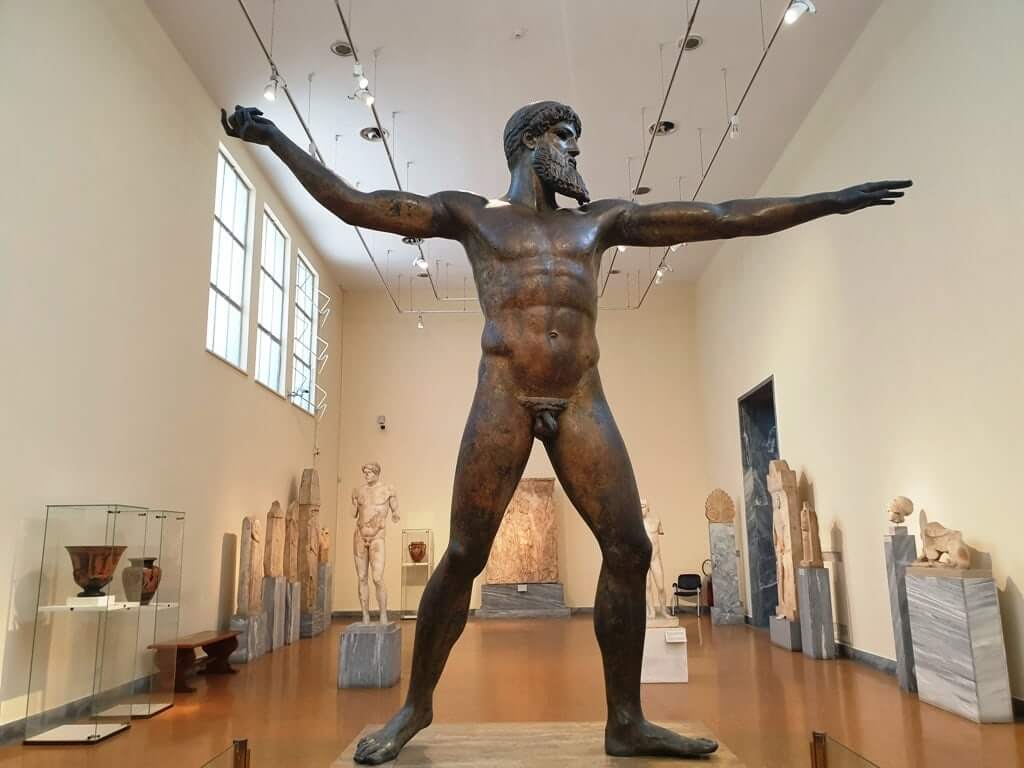
The ancient Greeks were not necessarily as muscular as the statues. Although ancient Greek culture advocated sports and exercise, statues were often idealized expressions that emphasized physical strength and virtues. Most ancient Greeks may not have the muscular texture depicted on statues, but their lifestyle did include sports and outdoor activities, which helped them maintain a healthy lifestyle. The reason why ancient Greek statues were so muscular was more an expression of art and culture than an accurate reflection of the body shape of the ancient Greeks.
3. Famous muscular greek Sculpture names
1. Discobolus (Discus Thrower)
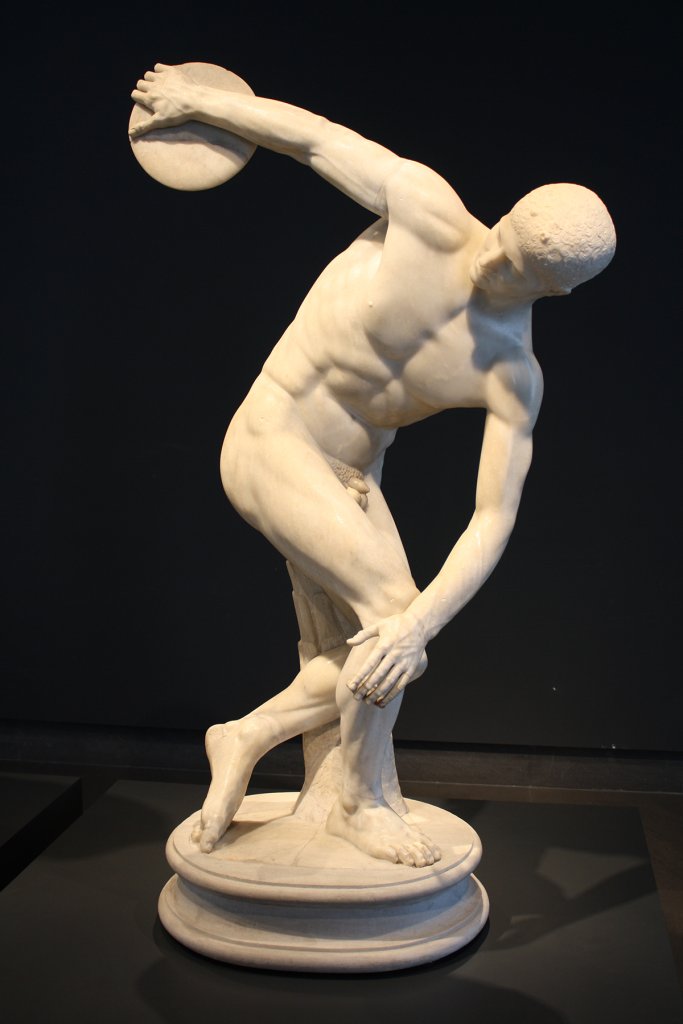
Discobolus is a masterpiece of ancient Greek sculpture, created by the Greek sculptor Miranda around the 5th century BC. This statue is based on the image of a discus thrower, showcasing the moment he throws the discus during a competition. The statue captures perfect muscle proportions and dynamic movements, emphasizing the beauty of harmony in the human body. It symbolizes ancient Greece’s love for sports and sports, as well as its pursuit of the beauty of the human body. The discus thrower reflects the sports and competitive values of ancient Greek culture and has become one of the classics of ancient sculpture, still widely praised and studied to this day.
2. Statue of Zeus at Olympia
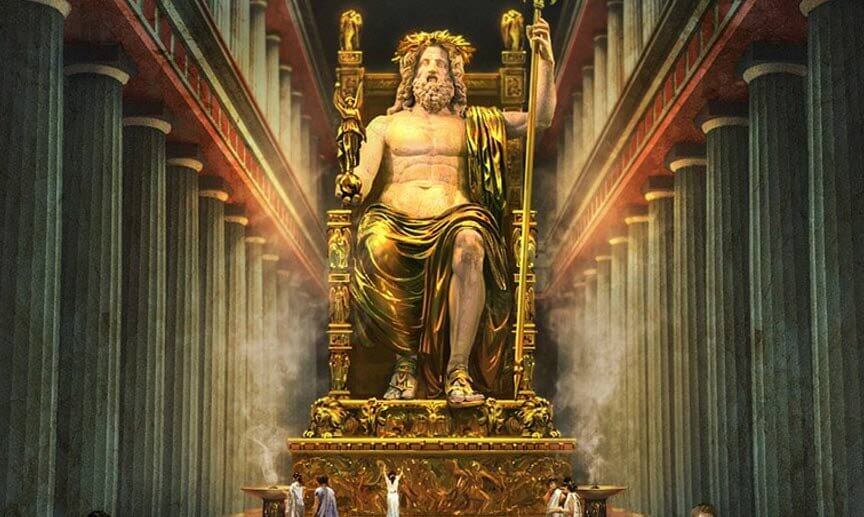
The Statue of Zeus at Olympia is one of the magnificent masterpieces of the ancient world, created in 430 BC. This statue was created by Greek sculptor Phidias and is about 12 meters (40 feet) tall. It is made of gold and ivory and depicts Zeus sitting on a seat in the Zeus temple, lifelike. Zeus is the highest god in ancient Greek mythology, and the statue represents his divinity and authority. This statue is famous for its exquisite carving techniques and solemn forms of expression, and is one of the symbols of Olympia, the sacred site of the ancient Olympic Games. Although the statue has disappeared, its influence still has a profound impact in the fields of art and culture, becoming a great symbol of ancient civilization.
3. Laocoön and His Sons
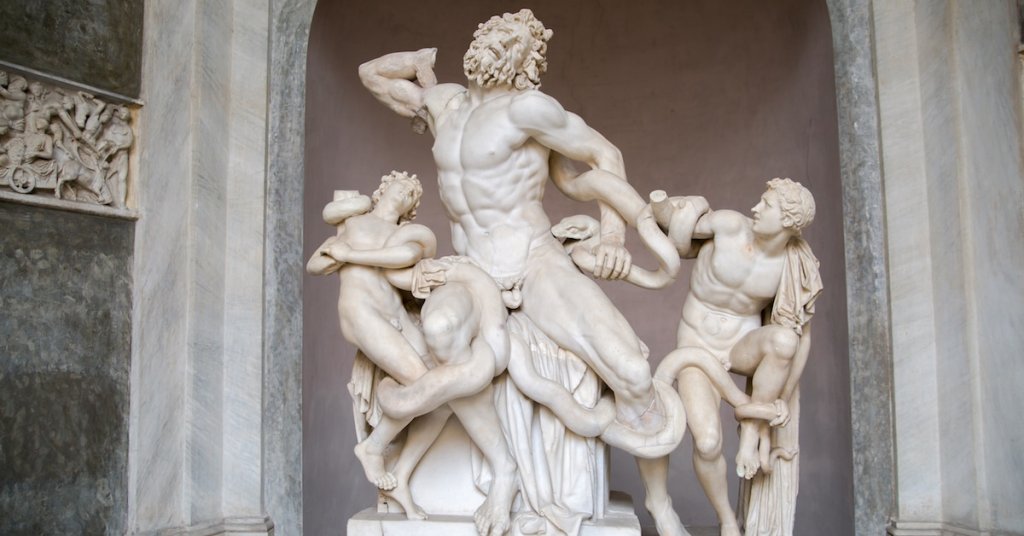
Laocoon and Sons Sculpture is a famous ancient sculpture created in the 1st century BC. This statue depicts the scene of Father Laocoon and his two sons in Troy being entangled by snakes, and is one of the masterpieces of ancient Greek and Roman art. It expresses dramatic emotional and physical expressions, as well as profound expressions of pain and resistance. This statue highlights the tragic themes of ancient Greek and Roman culture and is considered an outstanding example of ancient sculpture. Today, it is housed in the Vatican Museum and has become a world cultural heritage site, continuing to attract praise and research from people.
4. Riace Warriors
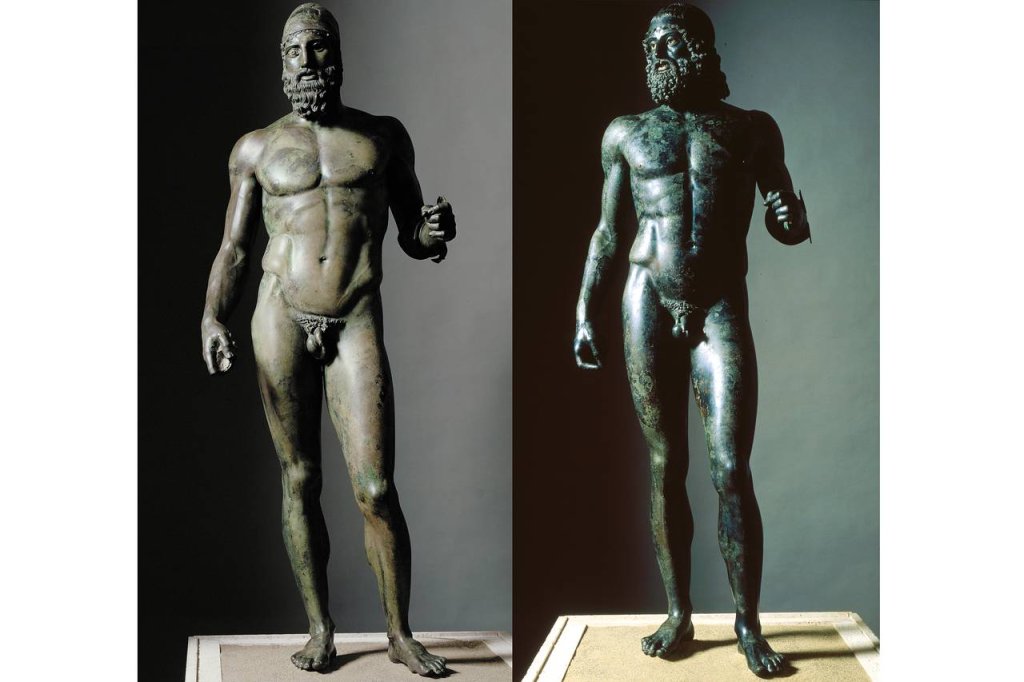
Riace Warriors are two ancient Greek bronze statues discovered in 1972, located on Riace Beach in the Galicia region of Italy. These two statues are considered works of the 5th century BC, created in the classical era of ancient Greece. They depict a soldier and a young naked man respectively, known for their magnificent proportions and exquisite carving techniques. The Lyric warriors represent the pinnacle of ancient Greek sculpture, emphasizing the muscles and proportions of the human body, and have profound artistic and historical significance. Nowadays, they are housed in the National Archaeological Museum in Italy, attracting research and appreciation from many art enthusiasts and historians.
5. Muscular greek statue : Artemision
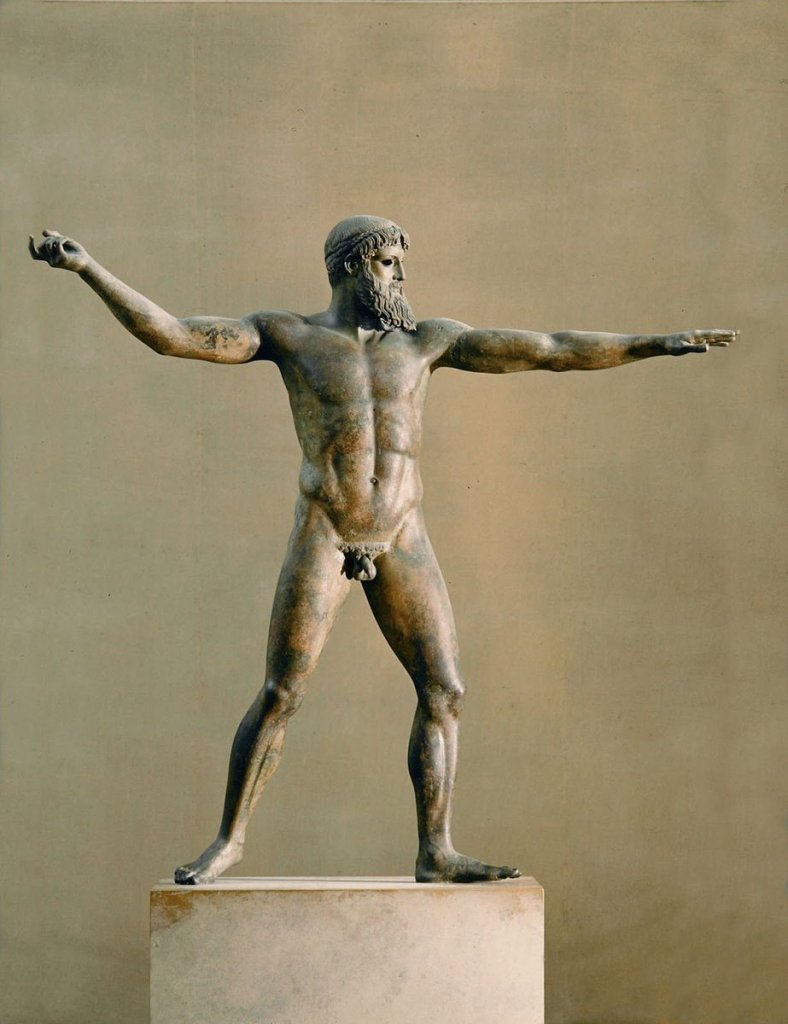
Artemision is a temple in the ancient world, located in today’s Türkiye and built in the 6th century BC. This temple was built in memory of the ancient Greek goddess Artemis, who was regarded as a goddess of hunting, wildlife, fertility, and the moon. The Temple of Artemis is famous for its magnificent temple structure and sculpture, and is one of the exemplary examples of ancient Greek architecture and sculpture. There was once a huge statue of Artemis in the temple, which is considered one of the seven wonders of the ancient world. Although the temple has been destroyed by the earthquake, its ruins and cultural value are still fascinating, attracting historical and archaeological enthusiasts to visit.
6. Doryphoros
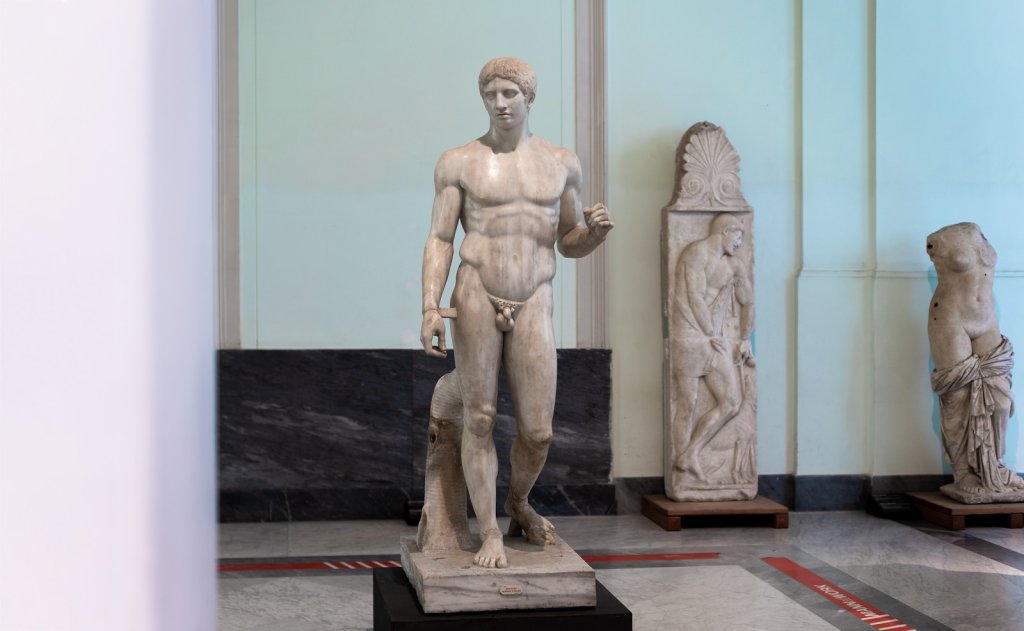
Doryphoros is a classical muscular greek statue created by the ancient Greek sculptor Polykleitos, dating back to approximately 440 BC. This statue depicts a naked young man holding a spear, reflecting the exploration of idealized human proportions in ancient Greek sculpture. It is known for its outstanding symmetry and proportion, and is considered one of the masterpieces of ancient Greek sculpture. The Spear Bearer represents the unique pursuit of human beauty and harmony in the classical era, and has had a profound impact on future generations of sculpture and art. The replica and details of this statue have been extensively studied to understand the techniques and aesthetics of ancient Greek sculpture.
Send us your requirements now, we will reply to your email within 24 hours
